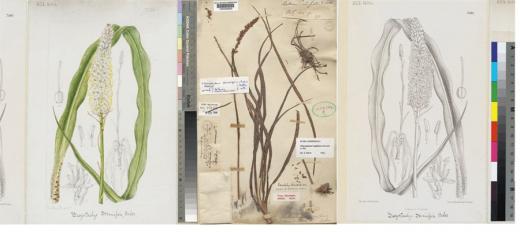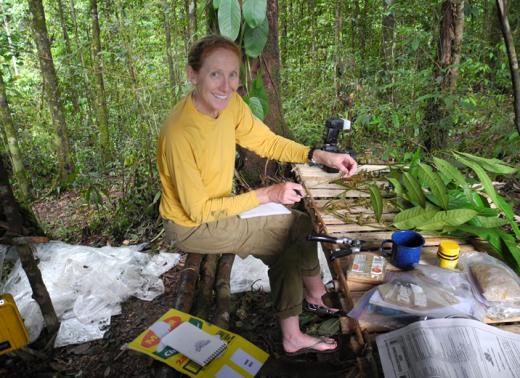In the lab: Livingstone’s Zambezi expedition
 JSTOR Global Plants has gotten very big--at last count some 2,222,000 plant type specimens and 245,000 primary sources were contained within it. That enormity has helped it to become an indispensable resource for plant taxonomists and botanists but can be overwhelming to non-specialists. At the GPI conference last September, our team spoke with many partners about the potential for highlighting smaller segments of Global Plants content, such as specimens and historical documents from a single expedition, and it was exciting how many shared our enthusiasm. Read more»
JSTOR Global Plants has gotten very big--at last count some 2,222,000 plant type specimens and 245,000 primary sources were contained within it. That enormity has helped it to become an indispensable resource for plant taxonomists and botanists but can be overwhelming to non-specialists. At the GPI conference last September, our team spoke with many partners about the potential for highlighting smaller segments of Global Plants content, such as specimens and historical documents from a single expedition, and it was exciting how many shared our enthusiasm. Read more»
 Shelley James is a Curator and Expedition Leader at the
Shelley James is a Curator and Expedition Leader at the  May 12, 2015 – Mountain View, CA and New York, NY – Metafor Software, a leading provider of real-time anomaly detection technology, and JSTOR today announced that JSTOR has adopted Metafor Software as a core component of its technology operations. JSTOR, a digital library that contains upwards of 50 million pages of content and serves millions of users annually, has implemented Metafor to speed awareness of problems in application performance and site usage and to enhance its monitoring of key metrics.
May 12, 2015 – Mountain View, CA and New York, NY – Metafor Software, a leading provider of real-time anomaly detection technology, and JSTOR today announced that JSTOR has adopted Metafor Software as a core component of its technology operations. JSTOR, a digital library that contains upwards of 50 million pages of content and serves millions of users annually, has implemented Metafor to speed awareness of problems in application performance and site usage and to enhance its monitoring of key metrics.  Gwenaël Le Bras was a database coordinator at the National Herbarium in Paris, acting as a liaison between the GPI team and the IT department of
Gwenaël Le Bras was a database coordinator at the National Herbarium in Paris, acting as a liaison between the GPI team and the IT department of